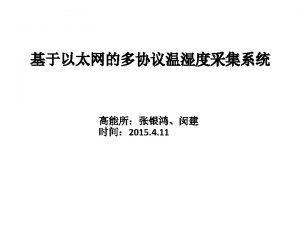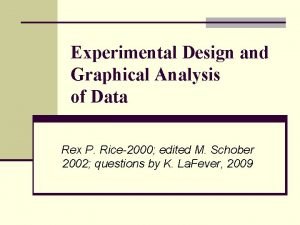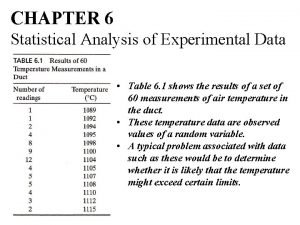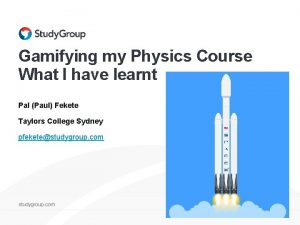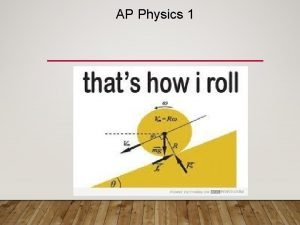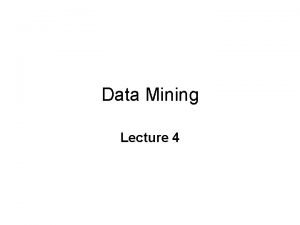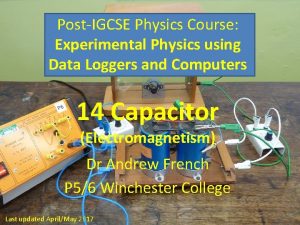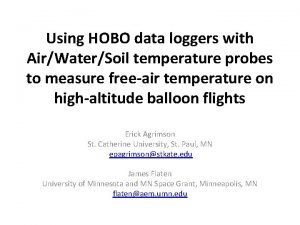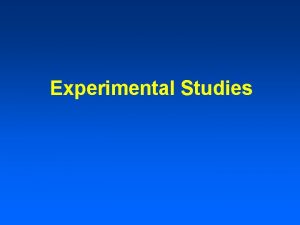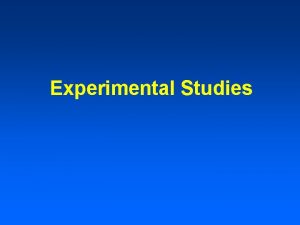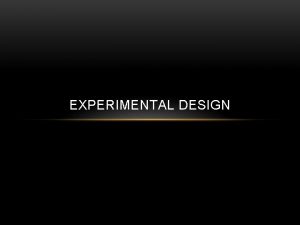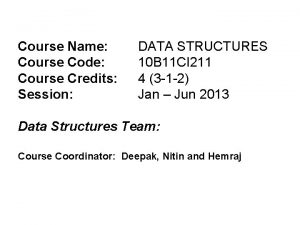PostIGCSE Physics Course Experimental Physics using Data Loggers























- Slides: 23

Post-IGCSE Physics Course: Experimental Physics using Data Loggers and Computers 08 Laser Diffraction (Waves) Dr Andrew French P 5/6 Winchester College Last updated April/May 2017

Experimental setup PASCO light sensor (with black tape covering and pinhole) Diffraction grating Laser on turntable PASCO USB hub Switch for laser Windows PC running CAPSTONE software

2 V DC power supply for potential divider which enables rotation angle of laser and grating to be measured Laser on turntable. Turntable is mounted on a potentiometer. PASCO light sensor (with black tape covering and pinhole) This was removed for several experiments to allow in more light

Laser beam will be diffracted by the grating. Turning the turntable enables one to measure the light intensity vs angle from normal to grating.

Black tape covering light sensor aperture with pinhole

Rotate laser mounting to enable light sensor to ‘scan’ diffraction pattern (i. e. light intensity vs angle)

The small aperture did not absorb sufficient light at modest angles from normal incidence. The cap and tape were removed, and the sensor was placed at an appropriate distance such that the distances between the main lobes would be greater than the width of the light sensor

Diffraction grating: 100, 300 or 600 lines per mm

Hardware setup for CAPSTONE PC software

CAPSTONE recordings of turntable voltage vs light level Principal maxima of diffraction pattern plus secondary lobes. (600 lines per mm grating)

Calibration – determining the voltage vs angle of turn relationship 90 o 45 o 0 o -45 o -90 o -135 o

100 lines /mm is a slit spacing of 10, 000 nm. For red light of wavelength 650 nm this means a spacing of about 15. 4 wavelengths. This is a guess! Although partially based upon what was observed i. e. the overall envelope of the diffraction pattern MATLAB model of expected diffraction pattern vs angle. Note due to the large number of lines in the grating (probably more than 10 in the beam), one expects each maxima to be sharper than indicated here.

Expect main lobes when: Unlikely individual peaks will be resolved by lux sensor

Very difficult to resolve lobes

300 lines /mm is a slit spacing of 3330 nm. For red light of wavelength 650 nm this means a spacing of about 5. 1 wavelengths. MATLAB model of expected diffraction pattern vs angle. Note due to the large number of lines in the grating (probably more than 10 in the beam), one expects each maxima to be sharper than indicated here.

Expect main lobes when:

Lobes at around 11 o as predicted. The lobes at higher angles were too small to measure, or possibly reduced by the aperture envelope (a slit width of about 3 wavelengths was guessed).

600 lines /mm is a slit spacing of 1667 nm. For red light of wavelength 650 nm this means a spacing of about 2. 6 wavelengths. MATLAB model of expected diffraction pattern vs angle. Note due to the large number of lines in the grating (probably more than 10 in the beam), one expects each maxima to be sharper than indicated here.

Expect main lobes when:

Lobes at around 23 o as predicted. The 50 o lobes were too small to measure

Overlay of data upon Fraunhofer model l = 650 nm Number of slits = 10 Slit width = 10 l Slit spacing = 15. 4 l Note slit width ‘guessed’ to endeavour to fit measured pattern. Note slightly different width were used from MATLAB diffractor model used in previous slides

Overlay of data upon Fraunhofer model l = 650 nm Number of slits = 10 Slit width = 3. 5 l Slit spacing = 5. 1 l Note: Slit width ‘guessed’ to endeavour to fit measured pattern.

Overlay of data upon Fraunhofer model l = 650 nm Number of slits = 10 Slit width = 2 l Slit spacing = 2. 6 l Note: Slit width ‘guessed’ to endeavour to fit measured pattern.
 Vfc400
Vfc400 Experimental vs non experimental
Experimental vs non experimental Univariate descriptive design
Univariate descriptive design Experimental vs non experimental research
Experimental vs non experimental research Experimental vs nonexperimental
Experimental vs nonexperimental Nonexperimental study
Nonexperimental study How do you make predictions using experimental probability
How do you make predictions using experimental probability Experimental physics and industrial control system
Experimental physics and industrial control system L
L Experimental physics and industrial control system
Experimental physics and industrial control system Stretcher bond t junction
Stretcher bond t junction Course title and course number
Course title and course number Chaine parallèle muscle
Chaine parallèle muscle How to linearize a side opening parabola
How to linearize a side opening parabola Statistical analysis of experimental data
Statistical analysis of experimental data Game physics course
Game physics course Physics a first course
Physics a first course Ap physics 1 course description
Ap physics 1 course description Using system.collections.generic
Using system.collections.generic Defrost using internal heat is accomplished using
Defrost using internal heat is accomplished using Data management course syllabus
Data management course syllabus Data mining crash course
Data mining crash course Fsl fmri
Fsl fmri Data mining course syllabus
Data mining course syllabus








